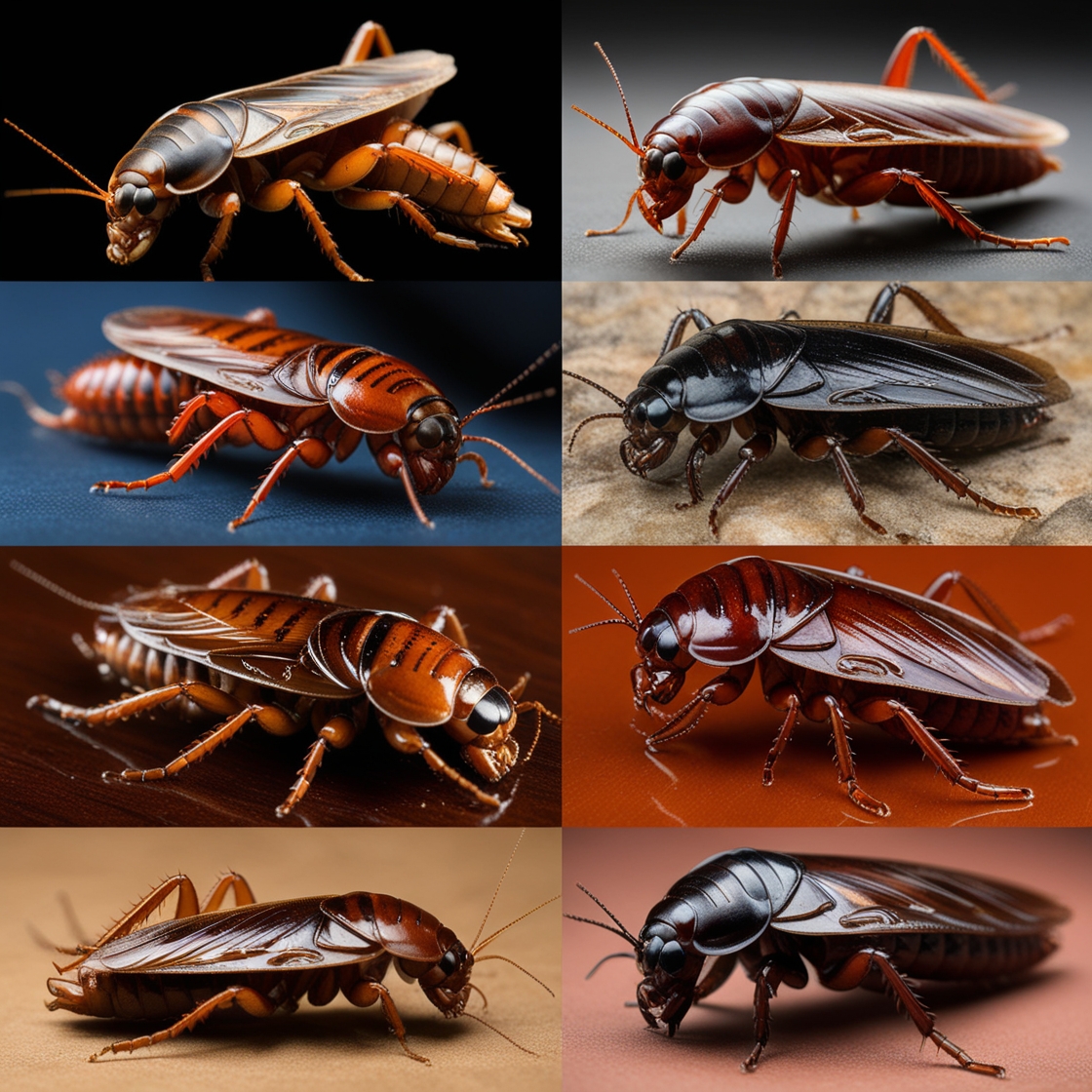Cockroaches that are common in South Carolina

South Carolina, known for its beautiful landscapes and warm climate, is also home to several species of cockroaches. These resilient insects have adapted well to the state’s environment, often becoming unwelcome guests in homes and businesses. Understanding the types of cockroaches common in South Carolina is the first step in effectively managing these pests.
The Palmetto Bug: South Carolina’s Infamous Roach
The term “Palmetto Bug” is often used in South Carolina to refer to large cockroaches, particularly the American cockroach. However, it’s important to note that “Palmetto Bug” is not a scientific classification but a colloquial term. These insects got this nickname due to their common association with palmetto trees, a symbol of South Carolina.
Palmetto bugs are known for their size, often growing up to 1.5 inches long. They have a reddish-brown color and possess wings, allowing them to fly short distances. These cockroaches are particularly well-adapted to South Carolina’s humid climate, thriving in warm, moist environments.
While palmetto bugs prefer outdoor habitats like gardens, woodpiles, and underneath tree bark, they often make their way into homes, especially during extreme weather conditions. Their ability to squeeze through small cracks and crevices makes them a common household pest in South Carolina.
American Cockroach: A Frequent South Carolina Home Invader
The American cockroach, scientifically known as Periplaneta americana, is one of the largest cockroach species commonly found in South Carolina homes. Often mistaken for the aforementioned palmetto bug, the American cockroach is actually the specific species behind this colloquial term.
These roaches can grow up to 2 inches in length and have a reddish-brown color with a yellowish figure-eight pattern on the back of their heads. Despite their name, American cockroaches are not native to North America but are believed to have been introduced from Africa.
In South Carolina, American cockroaches are frequently found in damp areas such as basements, crawl spaces, and sewers. They are also common in commercial buildings, especially those with food preparation areas. Their preference for warm, humid environments makes South Carolina’s climate ideal for their survival and proliferation.
German Cockroach: Small but Problematic
While not as large as their American counterparts, German cockroaches (Blattella germanica) are perhaps the most problematic cockroach species in South Carolina homes. These small roaches, typically measuring about half an inch in length, are light brown with two dark stripes running down their backs.
German cockroaches are particularly troublesome due to their rapid reproduction rate. A single female can produce up to 400 offspring in her lifetime, leading to quick infestations if not addressed promptly. They prefer warm, humid environments and are often found in kitchens and bathrooms, where they have easy access to food and water.
Unlike American cockroaches, German cockroaches are almost exclusively indoor pests. They are excellent at hiding in small cracks and crevices, making them difficult to eliminate once they’ve established themselves in a home.
Identifying Cockroach Infestations in South Carolina Homes
Recognizing the signs of a cockroach infestation early can help prevent a small problem from becoming a major issue. Cockroaches are nocturnal creatures, so seeing them during the day often indicates a significant infestation.
Signs of a Cockroach Problem
- Cockroach sightings: Seeing live or dead cockroaches is the most obvious sign of an infestation.
- Droppings: Cockroach feces resemble coffee grounds or black pepper. You may find these in kitchen cabinets, along baseboards, or in other hidden areas.
- Egg cases: Cockroaches lay their eggs in small, brown, purse-shaped capsules called oothecae. Finding these is a clear sign of an active infestation.
- Unusual odor: A large cockroach infestation often produces a musty, oily odor that can be quite noticeable.
- Smear marks: Cockroaches leave dark, irregular smear marks on surfaces where they frequently travel.
Areas Cockroaches Commonly Infest
In South Carolina homes, cockroaches tend to gravitate towards certain areas:
- Kitchens: The abundance of food, water, and hiding spots makes kitchens prime real estate for cockroaches.
- Bathrooms: The moisture and warmth in bathrooms are attractive to cockroaches, especially American cockroaches.
- Basements and crawl spaces: These dark, often damp areas are perfect hiding spots for cockroaches.
- Attics: Particularly during hot South Carolina summers, attics can become havens for cockroaches seeking shelter.
- Around appliances: The warmth generated by refrigerators, dishwashers, and other appliances attracts cockroaches.
- Garages: Often connected to the house and providing plenty of hiding spots, garages are common areas for cockroach infestations.
Prevention and Control of Cockroaches in South Carolina
Preventing and controlling cockroach infestations in South Carolina requires a multifaceted approach. From keeping palmetto bugs out to implementing comprehensive prevention strategies, there are several steps South Carolina residents can take to protect their homes.
Keeping Palmetto Bugs Out of Your Home
- Seal entry points: Inspect the exterior of your home for cracks, gaps, and holes. Seal these potential entry points with caulk or appropriate materials.
- Install weatherstripping: Apply weatherstripping around doors and windows to prevent palmetto bugs from squeezing through.
- Keep vegetation trimmed: Maintain a clear perimeter around your home by trimming bushes, trees, and other vegetation that could provide hiding spots or bridges for cockroaches.
- Remove outdoor hiding spots: Keep woodpiles, leaf litter, and other debris away from your home’s foundation.
- Use outdoor lighting wisely: Consider using yellow “bug lights” outdoors, as these are less attractive to insects compared to standard white lights.
Strategies to Prevent Cockroach Infestations
- Maintain cleanliness: Regularly clean your home, paying special attention to kitchens and bathrooms. Wipe down counters, sweep floors, and clean up spills promptly.
- Store food properly: Keep food in airtight containers and avoid leaving pet food out overnight.
- Manage moisture: Fix leaky pipes, use dehumidifiers in damp areas, and ensure proper ventilation in bathrooms and kitchens.
- Declutter: Reduce potential hiding spots by minimizing clutter, especially in storage areas.
- Regular inspections: Conduct routine checks of your home, focusing on potential problem areas like kitchens, bathrooms, and basements.
- Use natural deterrents: Some plants and herbs, like bay leaves and cucumber slices, are believed to repel cockroaches naturally.
Professional Pest Control Options
While DIY methods can be effective for minor infestations, professional pest control services are often necessary for severe or persistent cockroach problems in South Carolina homes.
- Integrated Pest Management (IPM): Many pest control companies in South Carolina use IPM approaches, which combine various control methods tailored to your specific situation.
- Chemical treatments: Professional-grade insecticides can be applied in targeted areas to eliminate cockroaches.
- Baits and traps: Professionals can strategically place baits and traps in areas where cockroaches are likely to travel.
- Fumigation: In severe cases, whole-house fumigation may be necessary, though this is typically a last resort.
- Ongoing monitoring: Many pest control services offer regular inspections and treatments to prevent future infestations.
- Education: Professional pest control experts can provide valuable information on preventing future infestations and identifying early signs of cockroach activity.
Impact of Cockroaches on South Carolina Residents
Cockroach infestations can have significant impacts on South Carolina residents, ranging from health concerns to property damage.
Health Risks Associated with Roach Infestations
- Allergies and asthma: Cockroach allergens, found in their droppings, saliva, and shed skins, can trigger allergic reactions and exacerbate asthma symptoms, especially in children.
- Disease transmission: Cockroaches can carry and spread various pathogens, including salmonella, E. coli, and other harmful bacteria.
- Food contamination: As cockroaches travel through unsanitary areas and then across food preparation surfaces, they can contaminate food with disease-causing organisms.
- Psychological impact: The presence of cockroaches can cause stress, anxiety, and sleep disturbances for many people.
- Skin infections: In rare cases, cockroaches may bite humans, potentially leading to skin infections or lesions.
Property Damage Caused by Common Cockroaches
While cockroaches are not known for causing extensive structural damage like termites, they can still cause various forms of property damage:
- Staining: Cockroach droppings and regurgitated digestive fluids can stain fabrics, papers, and surfaces.
- Food spoilage: Cockroaches contaminate far more food than they actually eat, leading to significant food waste.
- Electrical damage: In some cases, cockroaches may chew through electrical wiring, potentially causing short circuits or even fires.
- Paper and fabric damage: Cockroaches may feed on book bindings, wallpaper paste, and certain fabrics, causing visible damage.
- Odor problems: Large infestations can lead to persistent, unpleasant odors that are difficult to eliminate.
- Reduction in property value: A history of severe cockroach infestations can potentially impact a property’s value, especially if structural modifications were necessary for pest control.
Seasonal Patterns of Cockroach Activity in South Carolina
Understanding the seasonal patterns of cockroach activity can help South Carolina residents better prepare for and prevent infestations.
When Are Palmetto Bugs Most Active?
Palmetto bugs, or American cockroaches, are generally more active during warmer months in common South Carolina. Their activity tends to peak during late spring, summer, and early fall, when temperatures are consistently warm.
- Spring activity: As temperatures rise in spring, palmetto bugs become more active, often seeking entry into homes.
- Summer peak: The hot, humid South Carolina summers create ideal conditions for palmetto bugs, leading to increased sightings both indoors and outdoors.
- Fall movement: As temperatures begin to cool in fall, palmetto bugs may try to move indoors, seeking warmth.
- Winter behavior: While less active in winter, palmetto bugs in heated structures can remain active year-round.
- Weather influences: Extreme weather conditions, such as heavy rains or prolonged dry spells, can drive palmetto bugs to seek shelter in homes.
Year-round Cockroach Concerns
While some cockroach species show more pronounced seasonal patterns, others, particularly those well-adapted to indoor living, can be a year-round concern in South Carolina.
- German cockroaches: These pests are primarily indoor insects and maintain consistent activity levels throughout the year in temperature-controlled environments.
- Oriental cockroaches: Often found in basements and crawl spaces, these roaches prefer cooler, damper conditions and may be more noticeable in spring and fall.
- Brown-banded cockroaches: Another indoor species, these cockroaches remain active year-round in heated structures.
- Seasonal breeding patterns: While cockroaches can breed year-round indoors, outdoor populations may have more pronounced breeding cycles aligned with warmer weather.
- Winter survival: Even outdoor cockroach populations can survive South Carolina winters by seeking shelter in protected areas or entering heated structures.
- Climate change impacts: As average temperatures in South Carolina trend upward, cockroach activity periods may extend, potentially leading to longer or more severe infestation seasons.
In conclusion, cockroaches are a persistent concern for common South Carolina residents, with several species well-adapted to the state’s climate and urban environments. From the infamous palmetto bug to the problematic German cockroach, these pests can cause significant health issues and property damage if left unchecked. By understanding the types of cockroaches common in South Carolina, recognizing the signs of infestation, implementing prevention strategies, and seeking professional help when needed, residents can effectively manage and control cockroach populations in their homes. Staying vigilant and proactive is key to maintaining a cockroach-free living environment in the Palmetto State.
